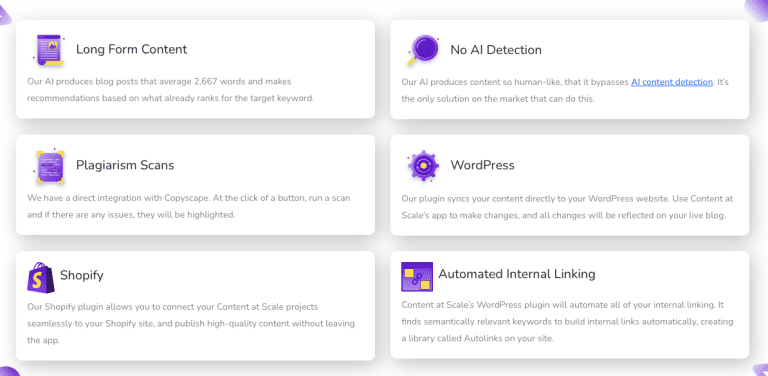Link Building Tutorial: Get 50+ Quality Backlinks Monthly

If you want to improve your website’s search engine rankings, you need to focus on building quality backlinks. Backlinks are links from other websites that point to your site. They’re an important factor in determining your website’s authority and relevance to search engines.
In this tutorial, you’ll learn how to get 50+ quality backlinks monthly using proven link-building strategies.
Link building is a critical component of search engine optimization (SEO). It involves getting other websites to link back to your site. The more high-quality backlinks you have, the more likely search engines will view your site as authoritative and relevant.
However, not all backlinks are created equal. Quality backlinks come from reputable websites that are relevant to your niche. They can have a significant impact on your search engine rankings.
In this tutorial, you’ll discover some of the most effective link-building strategies for getting quality backlinks to your site. From guest blogging and broken link building to social media and influencer outreach, you’ll learn how to build a diverse portfolio of backlinks that will help your site rank higher in search engine results pages (SERPs).
So, let’s dive in and start building those backlinks!
Understanding Link Building
The Basics of Link Building
Link building is acquiring hyperlinks from other websites to your site. These hyperlinks are also known as backlinks.
Backlinks are important because they signal to Google that other websites consider your content valuable and relevant. This signal can improve your website’s ranking in search engine results pages (SERPs).
Importance of Quality Backlinks
Not all backlinks are created equal. The quality of the backlinks you acquire is important.
Google’s PageRank algorithm considers the quality and quantity of backlinks to your site when determining your website’s ranking. High-quality backlinks from authoritative websites are more valuable than low-quality backlinks from spammy websites.
White Hat vs Black Hat Link Building
There are two main types of link building: white hat and black hat.
White hat link building refers to ethical practices that follow Google’s guidelines. Examples include creating high-quality content that others want to link to, guest blogging on relevant websites, and using social media to promote your content.
Black hat link building refers to unethical practices that violate Google’s guidelines. Examples include buying links, using link farms, and keyword stuffing.
Strategies for Effective Link Building
Link building is a crucial part of any successful SEO strategy. The key to building quality backlinks is to focus on creating great content that people will want to link to. Here are some effective strategies for building quality backlinks:
Content Creation and Marketing
Creating great content is one of the most effective ways to build quality backlinks. This can include blog posts, articles, videos, infographics, and more.
The key is to create content that is informative, engaging, and shareable. When you create great content, people will naturally want to link to it.
To get the most out of your content marketing efforts, promoting your content through social media, email marketing, and other channels is important. This will help you reach a wider audience and increase the chances of getting backlinks.
Guest Blogging and Guest Posts
Guest blogging and guest posting are great ways to build quality backlinks.
When you guest post on another website, you can reach a new audience and build relationships with other bloggers and website owners.
To get the most out of your guest blogging efforts, it’s important to focus on websites that are relevant to your niche. You should also ensure the website has a good reputation and a strong following.
When you guest post on a high-quality website, you can build quality backlinks that will help improve your search engine rankings.
Broken Link Building
Broken link building is another effective strategy for building quality backlinks. The idea behind broken link building is to find broken links on other websites and offer to replace them with links to your own website.
To get started with broken link building, you’ll need to find websites that are relevant to your niche and have broken links. You can use tools like Ahrefs or SEMrush to find broken links on other websites.
Once you’ve identified a broken link, you can contact the website owner and offer to replace the link with a link to your own website.
Using Infographics
Infographics are a great way to build quality backlinks. Infographics are visually appealing and easy to share, which makes them ideal for building backlinks.
To get the most out of your infographic marketing efforts, it’s important to create informative and visually appealing, high-quality infographics.
You should also promote your infographics through social media, email marketing, and other channels to reach a wider audience.
Leveraging Social Media
Social media is a powerful tool for building quality backlinks. Sharing your content on social media increases the chances of getting backlinks from other websites.
To get the most out of your social media efforts, it’s important to focus on platforms that are relevant to your niche. You should also engage with your followers and share informative and engaging content.
When you build a strong social media following, you can build quality backlinks that will help improve your search engine rankings.
Advanced Link Building Techniques
If you’re looking to take your link building strategy to the next level, you can use a few advanced techniques to build high-quality backlinks.
HARO Strategy
One effective strategy for building backlinks is to use Help A Reporter Out (HARO). HARO is a platform that connects journalists with sources for their stories.
By signing up as a source, you can receive daily emails with requests from journalists looking for quotes or information on specific topics.
To use HARO for link building, you’ll want to respond to relevant requests with a thoughtful and informative response. If your response is selected for the story, you’ll receive a backlink to your website.
Creating Linkable Assets
Another effective strategy for building backlinks is to create linkable assets. These pieces of content are so valuable and informative that other websites will want to link to them.
Examples of linkable assets include infographics, videos, and in-depth guides. To create a linkable asset, you’ll want to conduct thorough research on a topic and present the information visually appealing and engagingly.
Building Authority with Ultimate Guides
Ultimate guides are comprehensive resources that cover a topic in-depth. By creating an ultimate guide on a topic related to your industry, you can establish yourself as an authority in your field and attract high-quality backlinks.
To create an ultimate guide, you’ll want to conduct extensive research and provide detailed information on the topic. You can also include quotes from industry experts to add credibility to your guide.
Conducting Original Research
Conducting original research is another effective way to build high-quality backlinks.
By conducting a study or survey related to your industry, you can provide valuable insights that other websites will want to link to.
To conduct original research, you’ll want to define a clear research question and design a methodology for collecting and analyzing data. Once you’ve collected your data, you can present your findings visually appealing and engagingly.
Tools and Resources for Link Building
Regarding link building, having the right tools and resources can make a huge difference. Here are some of the top tools and resources to consider for your link building efforts.
SEO and Link Analysis Tools
One of the most important parts of link building is understanding the current state of your website’s backlink profile.
Tools like Ahrefs and SEMrush can help with this by providing detailed reports on your backlinks and those of your competitors. These tools can also help you identify new link building opportunities and track your progress over time.
Outreach and CRM Tools
Once you’ve identified potential link building opportunities, you’ll need to contact website owners and bloggers to pitch your content or request a link.
Outreach and CRM tools like BuzzStream and Pitchbox can help you manage your outreach efforts, keep track of your contacts, and automate some of the more tedious tasks involved in link building.
Content Research and Ideation Tools
Creating high-quality content is a key part of successful link building. Tools like BuzzSumo and Google Trends can help you identify popular topics and trends in your industry.
Meanwhile, tools like CoSchedule’s Headline Analyzer can help you craft compelling headlines that will grab readers’ attention.
Measuring and Tracking Link Building Success
Link building is an essential part of any SEO strategy. However, it’s important to measure and track your link building success to ensure that your efforts are paying off. In this section, we’ll cover some key performance indicators (KPIs) to track, how to analyze your backlink profiles, and how to adjust your strategies based on the data.
Key Performance Indicators (KPIs)
To measure your link building success, you need to track some key performance indicators (KPIs). Here are some KPIs to consider:
- Referring domains: This is the number of unique domains that link to your website. The more referring domains you have, the better.
- Domain authority: Domain authority is a metric developed by Moz that predicts how well a website will rank on search engine result pages (SERPs). The higher your domain authority, the better.
- Organic traffic: This is the traffic from search engines to your website. The more organic traffic you have, the better.
- Rankings: This is the position of your website on SERPs for specific keywords. The higher your rankings, the better.
- Click-through rate (CTR): This is the percentage of people who click on your website when it appears in search results. The higher your CTR, the better.
Analyzing Backlink Profiles
Analyzing your backlink profile is crucial to understanding the success of your link building efforts. Here are some things to look for when analyzing your backlink profile:
- Quality of backlinks: Not all backlinks are created equal. You want to focus on high-quality backlinks from reputable websites.
- Anchor text: This is the clickable text in a hyperlink. You want to ensure that your anchor text is diverse and relevant to the content on your website.
- Link portfolio: You want a diverse link portfolio that includes a mix of links, such as guest posts, directory listings, and social media links.
- Referring domains: You want to make sure that your backlinks are coming from a variety of different domains.
Adjusting Strategies Based on Data
Once you’ve analyzed your backlink profile and tracked your KPIs, it’s time to adjust your strategies based on the data.
Here are some things to consider:
- If you’re not seeing an increase in organic traffic, you may need to focus on building high-quality backlinks from reputable websites.
- If your domain authority is low, you may need to focus on building more high-quality backlinks and improving the quality of your content.
- If your CTR is low, you may need to focus on improving your meta descriptions and title tags to make them more compelling.
Ethical Considerations and Best Practices
When it comes to link building, there are some ethical considerations and best practices that you should keep in mind. These practices will help you maintain a natural link profile, avoid penalties and black hat techniques, and foster relationships with bloggers and influencers.
Maintaining a Natural Link Profile
A natural link profile is diverse and contains a mix of both dofollow and nofollow links. When building links, it’s important to focus on relevance and quality rather than quantity.
This means that you should aim to get links from websites that are relevant to your niche and have a high level of trust and authority.
It’s also important to avoid using the same anchor text for all of your links. Instead, use a variety of anchor text that includes your brand name, keywords, and other variations.
This will help you avoid over-optimization and keep your link profile looking natural.
Avoiding Penalties and Black Hat Techniques
Google has strict guidelines when it comes to link building, and violating these guidelines can result in penalties and a loss of rankings.
It’s important to avoid black hat techniques such as buying links, using private blog networks, and participating in link schemes.
Instead, focus on white hat link building techniques such as guest posting, broken link building, and creating link-worthy content.
These techniques are not only ethical but also effective in building high-quality backlinks that will improve your rankings and drive traffic to your website.
Fostering Relationships with Bloggers and Influencers
Building relationships with bloggers and influencers in your niche can be a great way to get high-quality backlinks and increase your online visibility.
When reaching out to bloggers and influencers, it’s important to be genuine and provide value.
Offer to write guest posts, provide expert insights, or collaborate on projects that will benefit both parties.
By fostering these relationships, you can build a network of trusted sources that will help you build your brand and improve your search engine rankings.
Scaling Your Link Building Efforts
If you want to get more than 50 quality backlinks every month, you need to scale your link building efforts. Here are some ways to do it:
Automating Outreach and Follow-ups
One of the most time-consuming tasks in link building is outreach. You need to find prospects, personalize your outreach emails, and follow up with them.
Fortunately, there are tools that can help you automate these tasks.
For example, you can use a free tool like Mailshake to send personalized outreach emails and follow-ups. You can also use a more advanced tool like Pitchbox to automate your entire outreach process.
Building a Team for Link Building
If you want to scale your link building efforts, you need to build a team. You can hire employees to help you with outreach, content creation, and link building. You can also outsource some of the tasks to freelancers or agencies.
When building a team, hire people with experience in digital marketing and link building.
You can also provide training courses and tutorials to improve their skills.
Creating a Repeatable Process
To scale your link building efforts, you need to create a repeatable process. This means you must have a clear plan and workflow for every step of the link-building process.
For example, you can create a spreadsheet to track your prospects, outreach emails, and follow-ups. To save time, you can also create templates for your outreach emails and follow-ups.
By creating a repeatable process, you can save time and ensure that your link building efforts are consistent and effective.
Frequently Asked Questions
What are the most effective free link-building tools available?
There are several free link building tools available that can help you secure high-quality backlinks. Some of the most effective free link building tools include Google Search Console, Moz Link Explorer, Ahrefs Backlink Checker, and Ubersuggest.
These tools can help you identify link opportunities, analyze your backlink profile, and track your progress.
What strategies can I use to secure 50+ high-quality backlinks monthly?
To secure 50+ high-quality backlinks monthly, you need to implement a comprehensive link building strategy. Some of the most effective link building strategies include creating high-quality content, guest blogging, broken link building, and leveraging social media.
You can also participate in forums, join business organizations, and become a source for journalists to secure more backlinks.
Could you describe a link building hack that yields substantial results?
One link building hack that yields substantial results is creating linkable assets. Linkable assets are pieces of content that are designed to attract links naturally.
These can include infographics, whitepapers, and case studies. By creating high-quality linkable assets, you can attract more backlinks to your site and improve your search engine rankings.
How do I manually find high-quality link prospects for a niche blog?
To manually find high-quality link prospects for a niche blog, you need to conduct thorough research.
Start by identifying your target audience and the websites they visit. Look for websites that are relevant to your niche and have a high domain authority.
You can use tools like Google Search and Moz Link Explorer to identify potential link prospects.
What differentiates high-quality backlinks from standard link building efforts?
High-quality backlinks are links that come from authoritative websites in your niche. These links are typically earned naturally and are difficult to obtain.
Standard link building efforts, on the other hand, involve creating low-quality links through tactics like blog commenting, forum posting, and link exchanges.
High-quality backlinks are more valuable because they signal to search engines that your site is trustworthy and authoritative.
What is a reasonable number of backlinks to aim for each month to grow my site’s presence?
The number of backlinks you should aim for each month depends on several factors. These include your niche, competition, and the age of your site.
Generally, it’s best to focus on quality over quantity when it comes to link building. Aim to secure a few high-quality backlinks each month rather than focusing on a specific number.
Remember, it’s better to have a few high-quality backlinks than many low-quality ones.
Disclosure: We may earn commissions if you buy via links on our website. Commissions don’t affect our opinions or evaluations. We’re also an independent affiliate of many platforms, including ClickFunnels, Kartra, GoHighLevel, Podia, Northwest Registered Agent, and others. We’re not employees of these services. We receive referral payments from them, and the opinions expressed here are our own and are not official statements of these companies.





